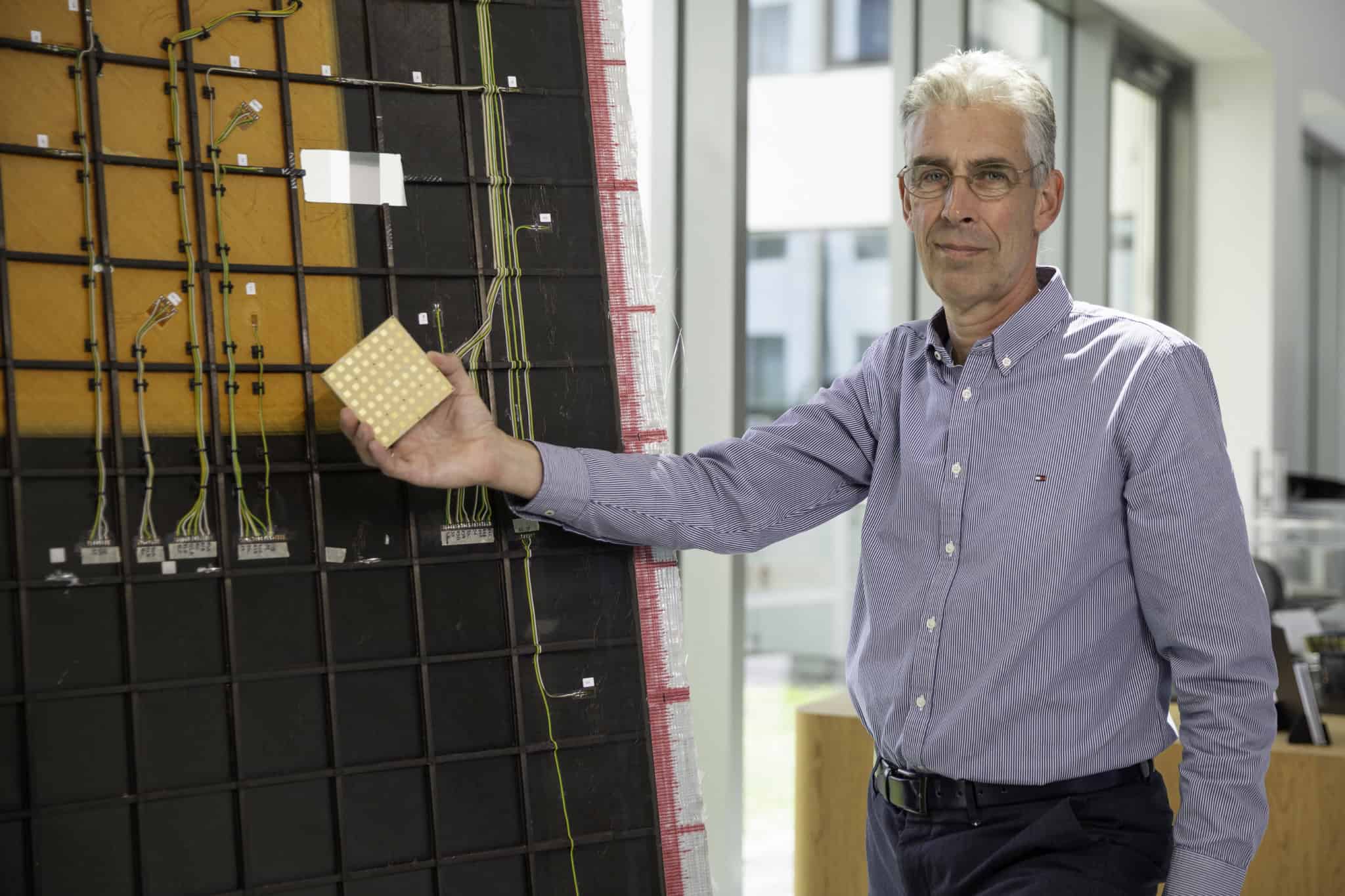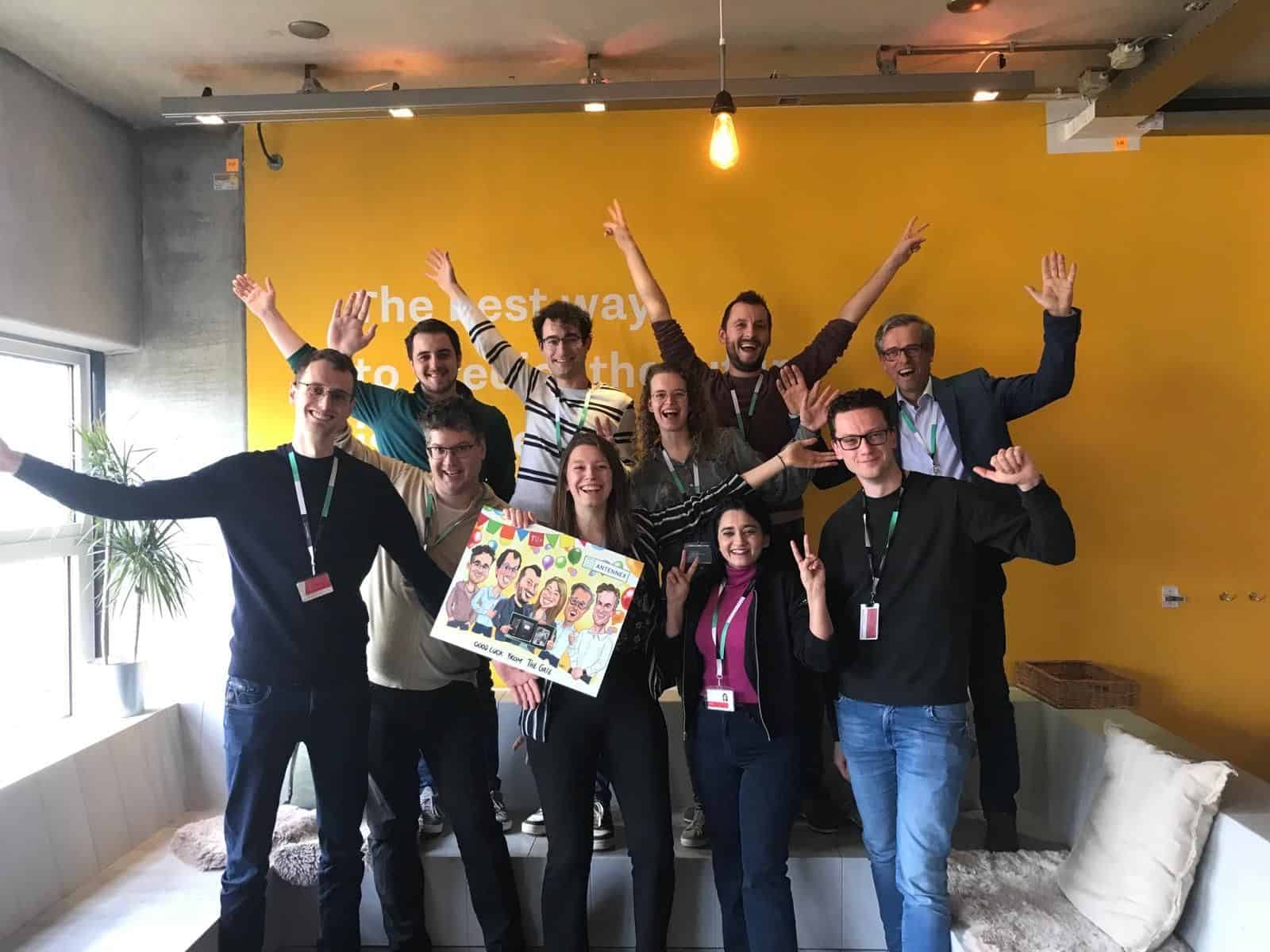
This week and last week, Innovation Origins has been looking at the growing influence of wireless communication within today’s society and in particular at data transmission via electromagnetic radio waves with ever-higher frequencies, such as 5G.
Technology in the field of wireless communication is advancing at lightning speed. Clever engineers have so far been able to design systems that allow us to transmit increasingly more data at ever faster speeds.
They make use of progressively higher radio frequencies for this purpose. Whenever it appears that a signal on a high frequency is easily lost due to a drop in strength (attenuation) along the radio path, this can be resolved by installing a sufficient number of base stations or by adding more antennas. Should it prove impossible to get a high frequency to cover a longer distance, then an antenna array system is a good solution. These lead the data via underground cables to centralized stations that are connected to each other.
What does not seem feasible one moment, turns out to be possible a decade later. This applies to self-driving cars, Jean-Paul Linnartz cites as an example. He’s a professor of electrical engineering and signal processing at the Eindhoven University of Technology (TU/e, the Netherlands). The higher the frequencies that we can use to transmit data in the future, the more data can be transmitted simultaneously at ultra-fast speeds. This is not quite working out at the moment, so it is not yet possible for driverless cars to hit the roads without a human operator present.
Robots could deliver food around hospital wards
What if that technology is available in the era of 5G or perhaps later when 6G comes into use and its future successors? In that case, it’s probably not just self-driving cars that you will see out and about on the streets. Although this is expected to be generally the case by then. Linnartz: “It’s hard to imagine how this technology will be used in the future. Yet there are predictions that robots, for starters, will be carrying out certain tasks that people are presently being employed to do.”
“In these times of corona, many people are worried about the risk of becoming infected during a visit to the supermarket, for instance. Groceries can be done by a robot that picks up goods from a warehouse. Going to the supermarket is not exactly the place to be for your social contacts. You do bump into people there. But you’re better off meeting them in a different setting.”
Linnartz acknowledges that perhaps in some situations, robots could also take over the work of nurses. For example, to turn over the body of a corona patient in an ICU. This is heavy physical work, so you can also use the help of a robot to do it. The primary reason for this is not so much the risk of infection, Linnartz expects, but due to the lack of healthcare staff, which is bound to decline even further according to forecasts.
Routine tasks such as delivering meals could be taken over by robots, for one thing. “You could then free up people for more human contact, like a good chat.”
Will robots soon know everything about us?
A consequence of the rising use of robots in the provision of services to people is that they will be able to collect, store, and forward data about those people to a central storage location. So, what happens to that is the big question. Is there a big brother somewhere who knows everything about your personal life, without you even being aware of it?
It is therefore also a real challenge, according to Linnartz, to safeguard the privacy of any personal data arising from the use of all kinds of wireless communication devices.
The European Commission is currently struggling with this, Linnartz explains. “At some point, they wondered if there should be a European platform that would replace Facebook. With the aim of dealing more carefully with data privacy than Facebook does.”
But so far the general public doesn’t seem to have much interest in this. Perhaps the tide will turn? “That might happen,” he suggests. “We’ree seeing that society is changing as a result of the corona crisis. We are managing to pollute the atmosphere less and to fly less. We can still work together via video conferencing. At the same time, more and more thought is being given to linking and collecting social data with the aim of containing the virus. But risks to privacy are also being experienced much more keenly.”
Corona apps fail in terms of privacy
Over the past few weeks, companies have presented various proposals for a corona app. But these did not meet the required privacy criteria. They were rejected on these grounds. However, according to Linnartz, the good news that followed from this is that the European investment vehicle EIT Digital has come up with a proposal whereby not the smartphone is used to collect data, but a separate wireless communication device that you can buy from a supermarket, for instance. That device is anonymous and has a number. It will receive an alert if it comes close to an infected person. As long as they also have the same device and have registered their infection on it. “That doesn’t pose any privacy problems.”
But there is also some news that is not so good. According to him, in several European countries, there is a tendency to go for the Chinese model. This does not respect the privacy of citizens whatsoever. “That must be avoided,” he believes. “Once you go down that road, you can’t come back that easily.”
You can also read other IO articles about 5G via this link.








